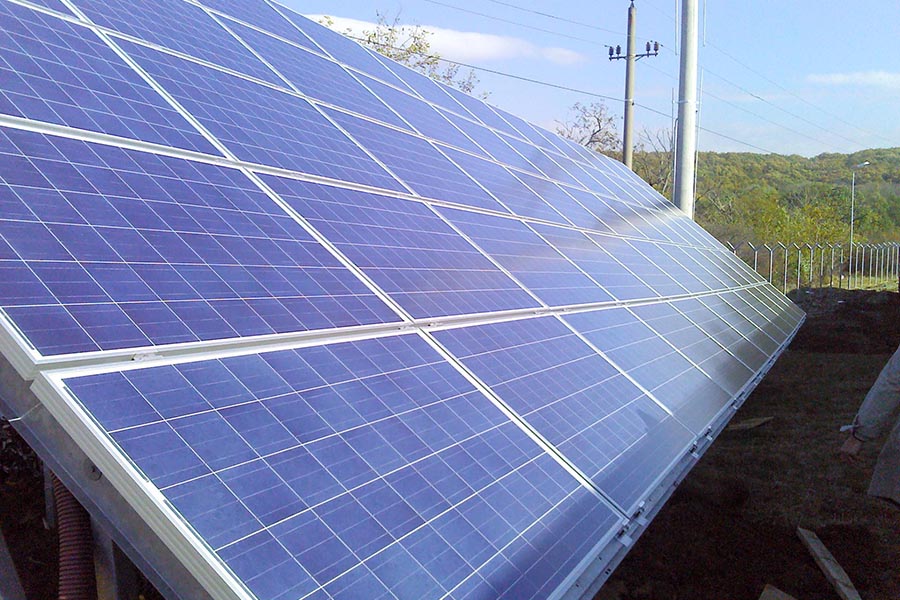
Myplant & Garden 2022
15/02/2022
Hydroponic cultivation: an answer to drought and climate change
02/08/2022Eco-greenhouses:
how to reduce environmental impact
Our age is unfortunately marked by worrying climate change. The ever-increasing level of pollution requires commitment from everyone to remedy the environmental damage caused in the last century.
Eco-greenhouses represent a step forward in a virtuous and environmentally friendly direction. Artigianfer has always chosen the path of sustainability and has invested many resources in the development of greenhouses that take advantage of renewable energy, patenting some innovative and sustainable greenhouse models.
In this article we will understand what features a greenhouse must have to be considered truly environmentally friendly, how to make it and what are the most sustainable solutions of Artigianfer.
Using energy responsibly

Photovoltaic greenhouses
Photovoltaic greenhouses are fixed structures that work thanks to a series of solar panels generally installed on the roof. Inside they are exactly like any greenhouse and allow the cultivation of flowers, plants and vegetables of all kinds. They also contain all the control systems necessary for cultivation and performance monitoring: these very systems are powered by the electricity produced through the photovoltaic panels positioned on the roof of the greenhouse. The solar energy will also cover the lighting needs of the greenhouse, ensuring economic savings as well as an advantage for the planet.
Photovoltaic greenhouses can be made in different materials and of any size, depending on the needs and the available space.

Hydroponic greenhouses
Hydroponic greenhouses represent a cutting-edge frontier in the field of eco-greenhouses.
The term hydroponic refers to a method of cultivation that allows to obtain larger harvests and better quality, even in less fertile soils and without being tied to seasonality. This is possible thanks to the supply of water enriched with nutrients such as potassium, calcium and magnesium.
Hydroponic greenhouses are considered environmentally sustainable because they allow water savings of up to 90% compared to traditional crops: not only because the nutrient solution not consumed by the plants is reused, but also because the irrigation systems work by recovering rainwater.
Systems and optimization
Greenhouses can also be considered eco-sustainable from the point of view of the systems they use.
One of the biggest challenges today for those who build greenhouses is to develop efficient and productive systems, to achieve maximum results with minimum resources, avoiding any waste of water or energy. The most innovative systems for greenhouses take into account this aspect and are designed to optimize the management of irrigation (for example through the recovery of rainwater) and energy sources.
Thanks to increasingly advanced computer systems, every single process inside the greenhouse can be monitored and managed precisely, avoiding any kind of waste.

Materials

Finally, it is necessary to consider with great attention also the materials used: in order to talk about eco-greenhouses, it is essential to choose ecological and non-polluting materials.
One of the best materials from this point of view is certainly glass, which lasts a long time because it resists very well to atmospheric agents and can be completely recycled. Besides glass, many greenhouse manufacturers are specializing in the production of innovative materials that are environmentally friendly and offer excellent performance without polluting: for example, some particular types of plastics used to cover the greenhouses are able to resist for 20 years without deteriorating.
Artigianfer eco-greenhouses
Artigianfer has always been a company at the forefront of research and development of environmentally sustainable solutions. We are convinced of the importance of creating greenhouses with low environmental impact, which respect the planet and its resources while offering excellent performance.
For this reason we have been pioneers in the use of innovative materials and in the launch of cutting-edge eco-greenhouses: we designed and built the first photovoltaic greenhouse in Italy, with integrated solar panels on the roof, and today we have 400 hectares of photovoltaic greenhouses all over the world.
In addition, we have created Sfera, the largest hydroponic greenhouse in Italy: it is a large project with 13 hectares of plant on a 22 hectare lot.
By partnering with photovoltaic experts, agronomists and industry specialists, we are able to offer each client a customized solution that is not only sustainable but also technologically advanced, efficient and productive.
If you would like to receive information on what we can do or would like to request a quote, please contact us.

